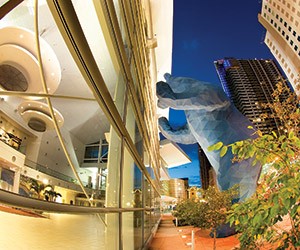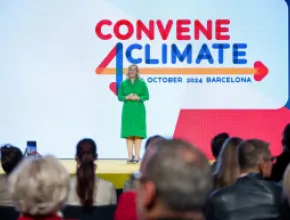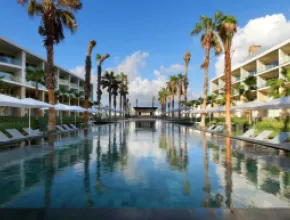Green meetings are red hot. And one of the biggest reasons sustainability has become one of the most talked about topics in meetings and events circles goes by the not-so-obvious appellation of E60.02, otherwise known as the APEX/ASTM Standards for Green Meetings.
“It was easy to talk green before we had standards,” says Nancy Zavada, principal of MeetGreen, an international planning firm based in Portland, Ore. “It was harder to be green because there was so little agreement about what ‘green’ meant. Every planner, every sponsor, every vendor had their own definition. Now we have the same definitions whether you are in Portland, Orlando, Copenhagen, Singapore or anywhere in between.”
Standards are important. Working with uniform definitions lets the industry stop arguing about what sustainability is and get down to actually making events more sustainable. It’s the same kind of change that came to convention centers, hotels and other venues when the U.S. Green Building Council unveiled its Leadership in Energy and Environmental Design program, or LEED, in 2000.
Not only did venues have a checklist of what they had to do to achieve different levels of sustainability, they had objective, dollars and cents evidence of the difference going green can make. In the case of a building, LEED-certified structures can see energy and water bills drop by 40 percent. That’s why so many convention centers, large (Orlando, Las Vegas, Chicago) and not-so-large (Denver, Portland, Whistler) have spent tens of millions of dollars on renovations and new construction to achieve ever-higher levels of LEED certification.
“My clients and I know that high performance buildings, buildings that meet LEED standards, are cheaper to operate and provide higher levels of performance and attendee experience,” Zavada says. “But LEED is about the building, not the activities in the building. ASTM has given us a checklist that will transform our events just as dramatically as LEED transforms venues.” PageBreak
Nine Lists, 40 Pages
APEX/ASTM has actually produced nine checklists, one for each set of standards: audio visual, accommodations, communications, destinations, exhibits, food and beverage, meeting venue, on-site office and transportation. The committees and subcommittees that wrote, rewrote and revised the initial standards are already at work on an initial round of revisions.
“Standards continue to evolve,” says Lawrence Leonard, CMP, COO, head of the Accepted Practices Exchange [APEX] for the Convention Industry Council. “The challenge is always to keep standards relevant to the state of the art, which is always evolving. As each of these nine standards come into practice, we are collecting feedback on where each needs to evolve.”
Expect revisions to start appearing over the next 18 months, Leonard says, but don’t expect any dramatic changes. Evolution will not invalidate anything that planners, sponsors, venues or vendors are already doing to meet the existing standards 1.0. The goal is to tweak standards periodically to make them more realistic and applicable to current practices as well as easier to understand and apply.
That’s a plus for planners, who work under a perennial time crunch, says Amanda Ulbrich, director of operations for the Green Meeting Industry Council (GMIC). Using those APEX/ASTM checklists is a time- and cost-effective way to evaluate their own operations as well as vendors, venue, destination and client operations. The checklist format is a relatively painless way to evaluate, measure and report on sustainability options.
“Applying the standards is a way to enhance your own brand value and create a better meeting experience for attendees and clients,” she says. “Sustainability is becoming a more valuable term. There is brand value associated with sustainability. There are true operational savings and positive recognition associated with sustainability.”
GMIC is working with iCompli, an outside assessment company, to create a third-party certification program for green meetings, planners and suppliers. But certification is still catching up with reality. Companies such as Oracle, Microsoft and McDonald’s have been doing sustainable events for years. Some companies are even issuing public report cards comparing waste stream diversion, energy use and other key indicators year-on-year.
Hotels and venues are taking similar steps. Radisson Blu has launched global protocols for meetings and events and F&B that are specifically designed to meet the new standards. In Las Vegas, the major chains are covering all the green bases because it’s good for business. Las Vegas Sands has even taken its Singapore property, the Marina Bay Sands, to ASTM Level 1 venue certification.
“Green is happening in the industry,” says Ryan Green, sustainable events manager at the Sands Expo and Convention Center in Las Vegas and head of the local GMIC chapter. “Anyone that wants to claim green has to have a certification today. It is a trend, but it is becoming a basic requirement. Clients are expecting us to produce an APEX-certified event.” PageBreak
The Supplier Edge
Suppliers have been among the first to jump into green meeting standards. For Ryan Green, it was an easy progression from LEED to APEX/ASTM, as the entire campus was already LEED. Arguing that events should be as sustainable as the buildings in which they were held was a no-brainer.
“Las Vegas venues are some of the biggest in the world, dealing with some of the biggest suppliers in the world,” he says. “Hotels have set the sustainability stage for the entire industry because of their purchasing power.”
Planners can help suppliers exercise that purchasing power in increasingly sustainable ways. Suppliers are in business to meet or exceed clients’ expectation and keep them coming, says Andrew Walker, events manager for MPI.
“Requests for sustainability are just one more thing suppliers are dealing with,” he says. “It is imperative for planners to keep making these requests since it validates the supplier’s investment of time, money and other resources into these efforts.”
Take waste. Show carpeting is traditionally used once then discarded. Many venues are now reusing carpeting. Some are even reusing the Visqueen used to cover carpeting to protect it from forklifts and other equipment. Sands Expo is sending Visqueen on to local farms for use as greenhouse covers. It’s not a money maker, Green says, but it helps divert plastic headed for landfills, helps local business, and helps clients meet their own sustainability goals.
How that triple-win plays out with planners and client site selection is an open question. Venue selections are usually made at least a year or two in advance, longer for larger groups, says Lindsay Arell, sustainable programs manager for Denver’s Colorado Convention Center. She chairs the ASTM E60.02 committee overseeing the green meeting standards.
Convention centers don’t expect to see much change in booking patterns for two to three years. By then, sustainability could be even more entrenched than it is today.
“The real return on investment is not necessarily attributable to new business,” she says. “A lot of the impact is being able to solidify current operations and implement new systems. There is an immediate payback and value-add.”
Freeman has been seeing an immediate payback since it began promoting its sustainability program in 2005 and 2006. As the largest general contractor in the U.S., Freeman is also one of the largest buyers in the country. When its started reusing carpet and Visqueen, switching to recyclable signage substrate, tracking employee air miles and taking similar steps to reduce waste, the difference showed on the bottom line.
“We are moving out of foam core to recyclable signboard,” says Jeff Chase, vice president of sustainability for Freeman. “With all of our vinyl banners, we are trying to find second-life vendors to turn them into bags, attendee badge holders and other products. The more sustainable and green you focus on, the more efficient you become and the more cost-effective your operations become. It’s a win for us, our clients, planners, our attendees and the Earth.”
Veteran meetings industry reporter Fred Gebhart discovered the value of reuse and recycle while living in Greece in an era when the deposit on wine bottles cost more than the wine.






